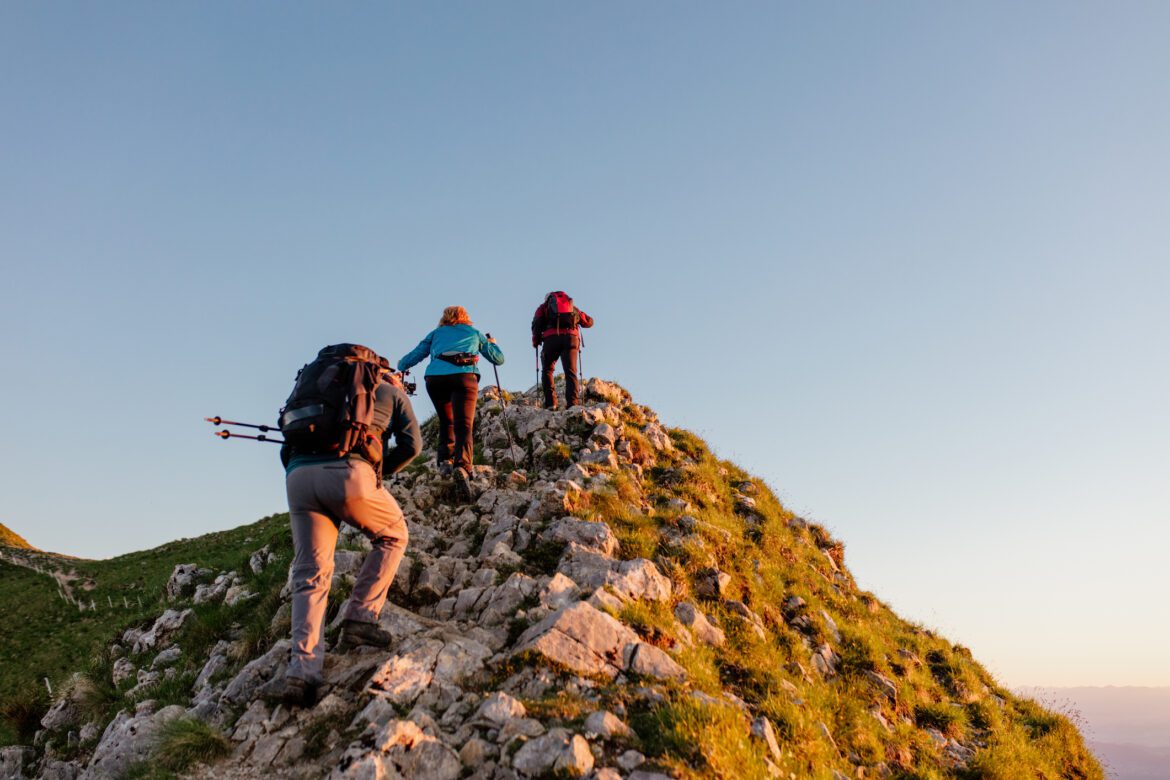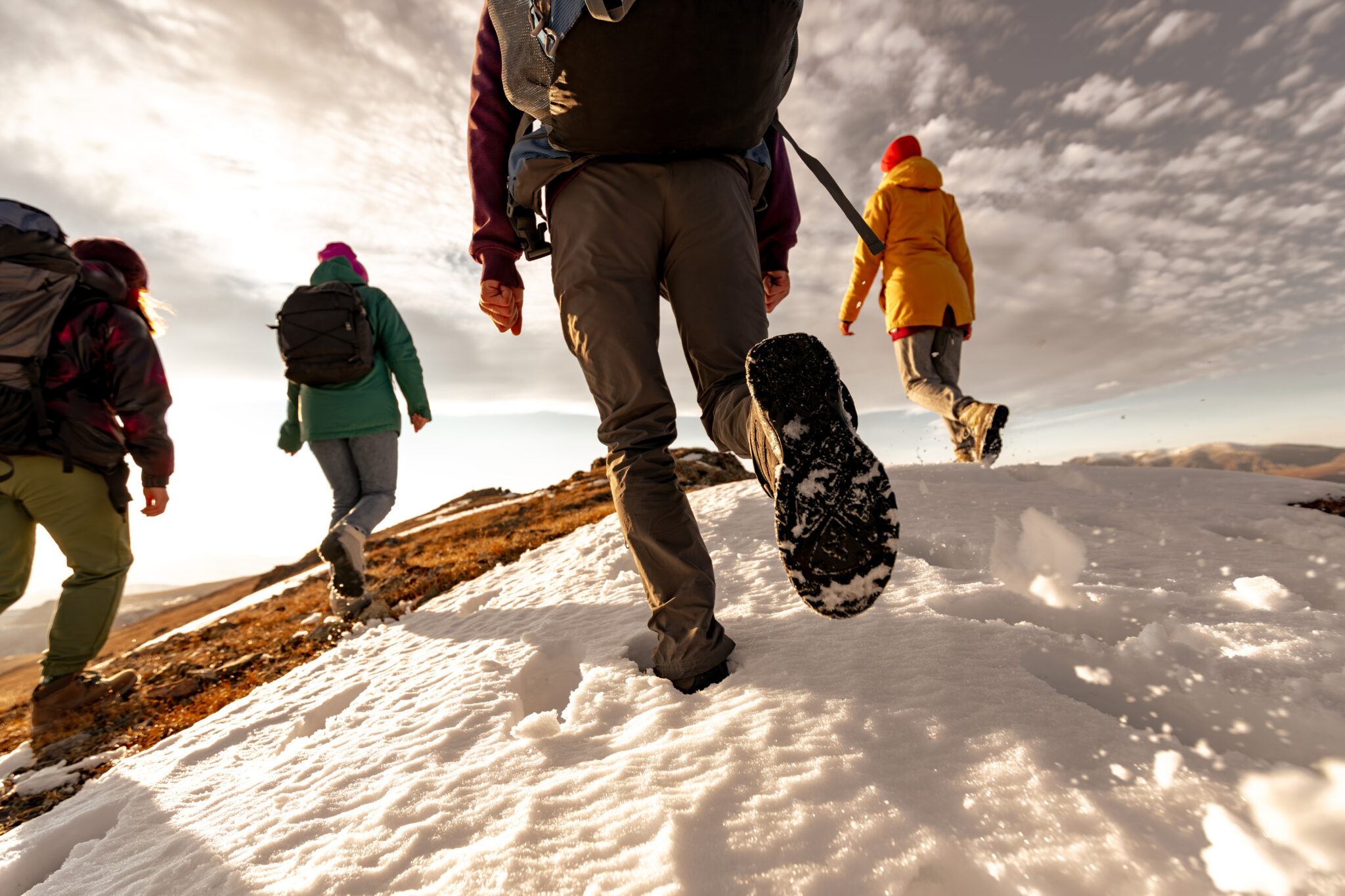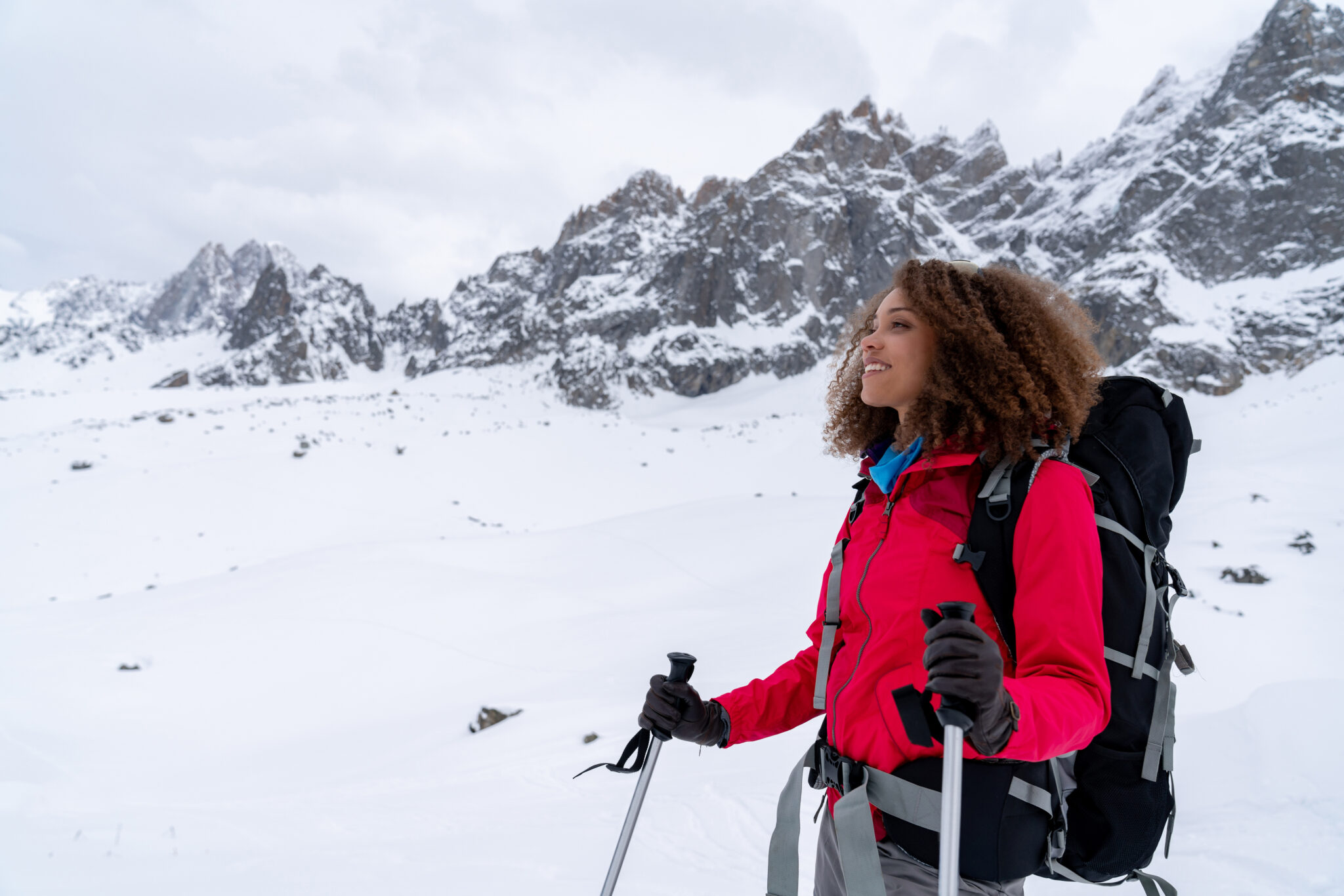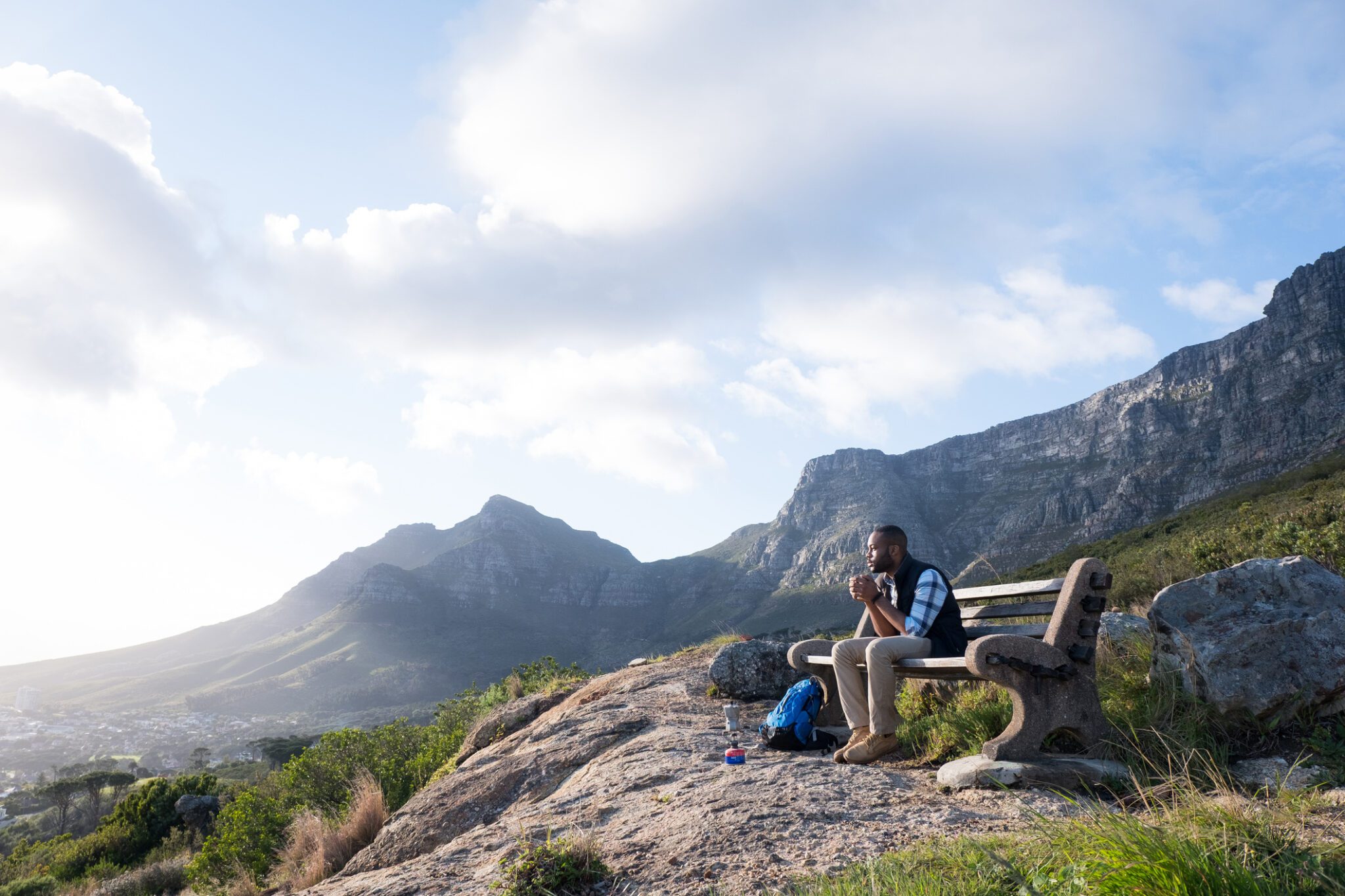In our May Policy Town Hall, experts provided updates on trade and tariff policies, highlighting ongoing negotiations with several countries and the impact of tariffs on small businesses.
Continue readingWebinar: Trade Policy Town Hall
Watch OIA’s Trade Policy Town Hall as our trade experts help outdoor businesses understand and respond to the latest tariff updates.
The recent announcement of substantial global tariffs will have real and immediate impacts on outdoor businesses, from rising costs and supply chain disruptions to uncertainty in planning and operations. At OIA, we’re focused on what matters most: protecting your business and sustaining the outdoor industry’s economic strength.
Tariff policies that increase costs on outdoor products threaten the $1.2 trillion outdoor recreation economy, the more than 5 million American jobs it supports, and the 175.8 million Americans who love the outdoors and rely on access to affordable, high-quality outdoor gear.
What You Can Do:
- Share your story: Share your tariff impact stories with us to help drive policy change.
Advocate: Support the bipartisan Trade Review Act of 2025, introduced by Senators Grassley and Cantwell, by sending a message to your Member of Congress today.
- Stay informed: Sign up for our Outdoorist newsletter to get the latest outdoor industry updates and trade information for your business.
Lean on us: From direct lobbying to one-on-one consultations, OIA offers expert policy resources and support to help you stay ahead of trade challenges and protect your bottom line. Get in touch with our team.
As we navigate what’s next, we’ll continue to tirelessly advocate for fair, balanced trade policies that put the outdoor industry first.
Watch the Webinar:
Tuesday, April 8, 2025
A Smarter Path to Cleaner, Safer Products: OIA’s Six-Step Roadmap for Chemicals Management
The outdoor industry thrives on innovation, performance, and a commitment to sustainability. Yet, as awareness of the environmental impact of business grows, companies are facing increasing pressure to align their products and supply chains with sustainable practices that prioritize safety and transparency.
Chemicals used in outdoor recreation products—from waterproof coatings to durable textiles —play a critical role in performance. However, many traditional formulations contain substances that pose risks to human health and ecosystems. Governments worldwide are implementing stricter regulations, and consumers are demanding greater accountability from brands.
Recognizing this shifting landscape, the Outdoor Industry Association (OIA), through its Clean Chemistry and Materials Coalition (CCMC), is equipping outdoor businesses like yours with the tools and strategies you need to take proactive steps toward safer, cleaner product development.
New OIA Resources: A Roadmap for Safer Products
To help organizations navigate chemical safety, compliance, and innovation, OIA is releasing two new resources to guide planning and implementation to reach sustainability goals.
- Chemicals Management Getting Started Guide – Available to all OIA members, this six-step framework outlines a clear roadmap for building safer, more responsible products.
- CCMC Guidebook – A comprehensive, 73-page resource for Support+ and Leadership members, featuring detailed checklists, case studies, and technical guidance on building a robust chemicals management program.
Both guides center around OIA’s six-step CCMC Pathway, which provides you with a structured approach to eliminating harmful chemicals, adopting safer alternatives, and integrating supply chain sustainability into long-term strategies.
Let’s explore these six steps and how your company can leverage them to build a safer, more sustainable business.
1. Discover: Map Your Chemistry Footprint
Before businesses can improve chemical safety, they need to understand their starting point. The first step in chemicals management is gaining visibility into your supply chain, materials, and potential chemical hazards.
Key actions:
- Map your supplier network – Understand where and how your products are made, including Tier 1 and upstream suppliers.
- Build a material inventory – Track what’s in your products, from base materials to performance treatments.
- Identify high-risk chemicals – Review industry-standard Restricted Substances Lists (RSLs) and emerging regulations, such as PFAS bans.
- Monitor evolving regulations – Stay ahead of national and international compliance requirements to avoid risks like product recalls.
Why this matters: Businesses that take a proactive approach to understanding their chemical footprint will reduce regulatory risks and build consumer trust.
2. Plan: Set Goals and Build a Strategy
Once a company understands its chemical risks, the next step is to set clear objectives and create an action plan for safer chemistry.
Key actions:
- Define internal and external goals – Set measurable targets for eliminating harmful chemicals and adopting safer alternatives.
- Assign responsible teams – Ensure cross-functional collaboration across product development, compliance, and sourcing teams.
- Develop a phased action plan – Outline short-term compliance goals and long-term innovation strategies.
- Ensure supplier accountability – Work with manufacturers to implement clear, enforceable chemical policies.
Why this matters: A strategic plan keeps businesses on track, ensuring chemicals management efforts align with business sustainability goals.
3. Act: Implement Safer Practices
With a plan in place, companies must now take action to integrate safer chemistry into product development and supply chain management.
Key actions:
- Adopt a Restricted Substances List (RSL) – Align with industry standards to ensure compliance across product lines.
- Implement a robust testing program – Establish procedures for monitoring chemicals at various stages of production.
- Communicate expectations with suppliers – Clearly define what materials and formulations are acceptable.
- Phase out high-risk chemicals – Proactively replace harmful substances with verified safer alternatives.
Why this matters: Companies that act now to implement safer chemicals management will be better positioned for future regulations and market demands.
4. Accelerate: Strengthen Supplier Partnerships & Drive Innovation
Once the foundation of a chemicals management program is in place, the next step is to scale impact through continuous improvement and innovation.
Key actions:
- Move beyond compliance – Establish Manufacturing Restricted Substances Lists (MRSLs) to control chemical inputs, not just finished products.
- Implement supplier chemicals management systems – Work directly with manufacturers to improve chemical safety practices.
- Explore green chemistry innovations – Invest in safer material alternatives that enhance product durability and performance.
- Leverage data-driven decision-making – Use testing insights and supplier audits to refine chemical safety strategies.
Why this matters: Forward-thinking organizations go beyond compliance—they lead with innovation and corporate environmental responsibility.
5. Advocate: Shape the Future of Safer Chemistry
The outdoor industry must work collaboratively to drive systemic change. Businesses that engage in policy advocacy and industry partnerships can help shape a greener future for outdoor products.
Key actions:
- Support public policies that promote safer alternatives and sustainability in business.
- Engage with policymakers to influence chemical safety regulations.
- Collaborate with industry groups – Join coalitions like OIA’s CCMC to share best practices and research.
- Invest in sustainable chemistry startups to accelerate eco-friendly business solutions.
Why this matters: Companies that take an active role in shaping the future of chemicals management will help set industry standards, rather than simply reacting to them.
6. Share: Build Trust Through Transparency
Consumers expect companies to be honest and transparent about their sustainability efforts. Clear communication about chemicals management builds credibility and loyalty.
Key actions:
- Provide verifiable data – Back up environmental claims with testing results and certifications.
- Educate consumers – Help customers understand why safer chemistry matters and how it enhances product performance.
- Avoid misleading green claims – Ensure all sustainability messaging is accurate and compliant with greenwashing laws.
- Report progress publicly – Share chemicals management milestones in sustainability reports and marketing materials.
Why this matters: Transparent organizations build stronger consumer relationships while staying ahead of corporate sustainability regulations.
Taking the First Step Toward Safer, Smarter Products
Adopting robust chemicals management practices is no longer optional — it’s a business imperative. Companies that fail to act risk regulatory penalties, supply chain disruptions, and consumer backlash.
By following OIA’s six-step roadmap, your company can:
- Reduce regulatory risk and stay ahead of evolving laws.
- Enhance brand trust through credible sustainability efforts.
- Leverage sustainable innovation to create high-performance, low-impact products.
- Strengthen supplier relationships for a resilient, responsible supply chain.
The Clean Chemistry and Materials Coalition (CCMC) is here to help. Whether you’re just getting started or refining an existing program, OIA’s new Chemicals Management Getting Started Guide and CCMC Guidebook provide the tools and resources you need.
Learn more and access the resources at outdoorindustry.org.
How Outdoor Brands Are Reducing Textile Emissions with Smarter Energy Solutions
Reducing emissions in textile production isn’t just an environmental responsibility—it’s a business necessity. Consumers expect brands to take meaningful action on sustainability, and regulations are pushing companies to reduce their carbon footprints. One of the biggest challenges? The fossil fuel-based heating systems used in textile manufacturing.
Traditional heating methods rely on coal, gas, or oil, making them a major source of greenhouse gas emissions. The textile and apparel industry alone contributes about 2% of global emissions, and with demand increasing, that number will only grow. If your brand is committed to lowering emissions, tackling the energy sources used in textile mills is a critical step.
A Practical Solution to Help You Reduce Emissions
To support this transition, Outdoor Industry Association, in partnership with Global Efficiency Intelligence and OIA member brands like Cotopaxi, L.L. Bean, New Balance, Patagonia, REI Co-op, and W.L. Gore & Associates, have launched the Textile Heating Electrification Tool. This open-source resource helps mills and brands transition from fossil fuels to electric heating by providing data on energy use, cost savings, and emissions reduction. It supports sustainability goals, regulatory compliance, and long-term efficiency.
Why This Matters for Your Brand
Sustainability goals can’t be met without action at the manufacturing level. The heating systems used in textile mills account for a significant share of supply chain emissions, and electrification is one of the most effective ways to lower them.
This tool provides clear, actionable insights to help businesses:
- Understand their current heating systems and identify where fossil fuel use can be reduced.
- Evaluate electric alternatives that work for different textile processes.
- Make informed investment decisions with data on costs, feasibility, and emissions reductions.
Andrew Dempsey, Director of Climate at REI Co-op, explained the importance of this issue:
“At REI, we believe progress on climate solutions happens through collaboration. Our goal is to cut emissions in half by 2030, but we can’t get there without working closely with our brand and manufacturing partners. Electric heat technologies are essential for decarbonizing textile manufacturing, and this tool gives us the data we need to move forward with confidence.”
Collaboration Makes Sustainability More Achievable
Developed under OIA’s Clean Heat CoLab, this tool embodies a collaborative approach to tackling industry challenges. OIA Impact CoLabs help brands and suppliers work closely, advancing sustainability goals more efficiently while lowering costs.
Julie Brown, Director of Sustainable Business Innovation at Outdoor Industry Association, highlighted the significance of this initiative:
“The launch of the Textile Heating Electrification Tool marks a major step in our industry’s collective effort to cut emissions in textile manufacturing. This tool combines expertise from across the outdoor industry to provide mills with the insights they need to transition to cleaner, more sustainable heating technologies.”
How to Get Started
This tool is designed to help businesses like yours take meaningful steps toward emissions reductions. If your brand works with textile suppliers, this is a resource that can drive real change.
Watch the webinar recording below and download our one-pager to start using this tool for smarter decision-making in your business.
Want to go further? Contact sustainability@outdoorindustry.org to get involved in OIA’s sustainability programs and work toward a lower-carbon future.
Business Solutions for Outdoor Leaders in 2025
Your business thrives when you have the right tools, resources, and community to support your goals. That’s where Outdoor Industry Association (OIA) comes in. More than a trade association, OIA is a member-led collective of businesses like yours—leaders, innovators, and changemakers—who are shaping the outdoor industry’s future while achieving measurable success today.
We know what matters to you: growing your business, staying competitive, and leading with purpose. OIA is here to deliver the education, events, and business intelligence you need to seize opportunities, tackle challenges, and drive results.
Here’s how you can make the most of your OIA membership in the coming year:
1. Use Your Outside Voice Through Advocacy
Timely engagement on issues critical to the health of our businesses and industry is not just the right thing to do—it’s a must do. We unify the voices of small and large companies across the country to promote policies and programs to save money, create jobs, invest in recreation, expand outdoor access for all, and protect our environment.
In 2025, we’re introducing new opportunities to engage and mobilize advocacy at the intersection of equitable access, trade, climate, and conservation.
2. Drive Strategy with Industry-Leading Business Intelligence
Better understand the markets and people you serve through OIA’s industry-leading data and insights on participation trends, market forces, consumer insights, and more. We work with multiple sources and leverage deep industry connections to provide the most focused and trusted view of the market and our consumers.
From comprehensive reports on participation and retail trends to benchmarking studies, our data empowers you to make informed decisions and drive growth for your business.
3. Lead the Charge for a Sustainable Future
Through OIA’s trailblazing programs and pre-competitive collaboration, your brand protects the outdoor experience upon which we all depend. We help our members learn fast to apply realistic and proven solutions to reduce greenhouse gases, phase out harmful chemicals, apply safe alternatives in the supply chain, and get ahead of challenges that impact product quality and customer satisfaction.
Our collaborative community is here to help you protect the people and places touched by your products and value chains.
4. Connect and Innovate at Industry Events
OIA brings the outdoor industry together through events and gatherings designed to inspire collaboration and innovation. Whether it’s through Capitol Summit, Catalyst Conference, Switchback, or virtual convenings, you’ll have opportunities to network with industry leaders and forge meaningful partnerships.
From the timing of events to the content they deliver, we aim to shape gatherings that bring value to all members and reflect the voices and needs of our entire community.
5. Empower Your Team with Resources and Savings
OIA membership includes a wealth of resources to help your team grow. From our career center, press room, and member portal to exclusive access to special preferred pricing on goods and services from OIA’s 20+ best-in-class service provider partners, your team can stay ahead of the curve and drive success across your organization.
6. Foster Equity and Inclusion in the Outdoors
OIA’s philanthropic arm, The Outdoor Foundation, is dedicated to getting people outside for their health, the health of communities and the health of the outdoor industry. Through community investment and groundbreaking research, we work with partners across the country to address equity barriers and help make the outdoors accessible for all. Your business can be a part of the movement.
Ready to Engage?
No matter your sector, product category, or company size, OIA is your partner in driving business success while staying true to the values that define the outdoor industry. Let’s make 2025 a year of meaningful growth and impact for your brand and our industry. Talk to our team today.
Solid Economy, Cautious Consumers: Outdoor Retail Confronts Challenges
Despite slowing inflation and a healthier overall economy, the outdoor retail market continues to face challenges. From shifting consumer behavior to cautious spending habits, there remains significant growth opportunities for outdoor industry businesses as we head into the new year. Read on to get a high-level overview of the trends driving the outdoor economy, as detailed in our recent State of the Outdoor Market Report Winter 2024.
GDP is up, But OUtdoor Retail Sales REmain Low
The U.S. economy is showing signs of growth, with GDP increasing by 2.8% in Q3, low unemployment at 4.2%, and wages steadily rising. Inflation is under control at 2.6%, and consumer sentiment remains high. Yet, despite these positive economic indicators, the outdoor retail market has seen a 5% dip in sales for the July-September period, totaling $6.2 billion.
Shifting Consumer Behavior: From Big-Ticket Items to Casual Gear
One notable trend is a shift from high-ticket outdoor gear—such as kayaks and camping equipment—to more casual and affordable products. Consumers are prioritizing items like road running shoes, casual apparel, and insulated cups. These products cater to the growing number of casual outdoor participants who enjoy activities like hiking, biking, or park visits, but don’t require specialized gear.
Holiday Shopping Outlook: Small Retailers Shine
The holiday shopping season presents a potential bright spot for the outdoor market. Interestingly, many outdoor consumers are turning to small retailers this season. Over half plan to shop at smaller stores, seeking personalized service and expertise. For independent outdoor brands, this trend presents a valuable opportunity.
Challenges in Outdoor Retail Sales
Despite the positive outlook for the holidays, outdoor product sales in September 2024 were down across the board. The decline affected every major sales channel, including large retailers like Dick’s Sporting Goods and REI, as well as online sales. Categories such as hiking boots, trail running shoes, and outerwear saw sharp decreases in both units sold and revenue.
Looking Ahead: What’s Next for Outdoor Brands?
While the broader economy remains strong, outdoor retailers face an uphill battle in 2024. The shift toward casual outdoor gear, combined with a more cautious consumer mindset, suggests that sales may remain flat or even dip. For brands to succeed, they’ll need to focus on more affordable products, adapt to the growing number of casual participants, and leverage the trend toward small-business shopping during the holidays.
Conclusion: A Market in Transition
The outdoor retail market is experiencing a shift, with consumers increasingly opting for casual outdoor gear rather than expensive, specialized equipment. The economic landscape remains positive overall, but inflation and changing consumer behavior are driving a more cautious approach to spending. Outdoor brands that understand and adapt to these trends—by offering more affordable, casual products and tapping into the holiday shopping momentum—will be better positioned to thrive in 2024 and beyond.
New California and Canada Sustainability Regulations: Key Impacts for Outdoor Brands
In a significant step towards enhancing sustainability and consumer safety, California has recently enacted two pivotal bills that will reshape compliance for manufacturers and retailers. The Responsible Textile Recovery Act of 2024 (SB 707) and the Household Product Safety: Toxic Substances: Testing and Enforcement (AB 347). Concurrently, Canada is implementing a new PFAS reporting rule, requiring importers to disclose specific per- and polyfluoroalkyl substances. These regulations will require immediate attention from outdoor industry brands and manufacturers. Our Clean Chemistry and Materials Coalition is here to support members with guidance and collaboration to ensure compliance and sustainable progress.
Two sustainability bills signed into law in California:
- The Responsible Textile Recovery Act of 2024 (SB 707)
- What is it? This law adopts a stewardship program for textiles, requiring producers to fund, design, and implement a program via a producer responsibility organization (PRO) for collecting, sorting, and recycling textile articles.
- How does this impact outdoor brands? If you sell textile products in the State of California, you will be subject to this rule, which is slated to go into effect on January 1, 2030.
- Household Product Safety: Toxic Substances: Testing and Enforcement (AB 347)
- What is it? This law requires covered manufacturers to register with the Department of Toxic Substances control, pay a registration fee, and provide a statement of compliance.
- How does this impact outdoor brands? If you produce textile articles, juvenile products, or food packaging products, you will be subject to this rule, which is slated to go into effect on July 1, 2029.
New PFAS Reporting Rule in Canada:
- What is it? The Notice with respect to certain per- and polyfluoroalkyl substances (PFAS) creates reporting requirements covering 312 PFAS when manufactured, imported, or used above certain thresholds.
- How does this impact outdoor brands? If you are the importer of record of any covered product under this notice, you must submit your report to Environment and Climate Change Canada (ECCC) by January 29, 2025.
Looking for expert guidance on how to ensure your brand is meeting new and upcoming sustainability requirements? OIA’s Clean Chemistry and Materials Coalition provides members with a scalable action plan for eliminating and replacing harmful chemicals and materials, delivering supply chain transparency, recycling and emission disclosures and more. Contact our sustainability team to learn more sustainability@outdoorindustry.org
5 Ways Benchmarking Can Drive Growth and Profitability for Your Outdoor Brand
In today’s competitive outdoor industry, brands need to make data-driven decisions to stay ahead. Benchmarking is a powerful tool that allows you to measure your brand’s performance against your competitors and industry standards, uncovering opportunities for growth and profitability. Here’s how benchmarking can help your outdoor brand blaze new trails to success:
1. Optimize Financial Performance
Benchmarking provides a clear picture of your brand’s financial health by comparing key financial ratios and indicators. By analyzing metrics like revenue growth, profit margins, and inventory turnover, you can identify areas where your brand excels and where improvements are needed. For example, understanding how your profit margins compare to industry leaders can highlight pricing strategies or cost management practices that could be adopted or refined. Similarly, tracking inventory turnover rates against top performers helps ensure that your capital isn’t tied up in excess stock, boosting cash flow and profitability.
2. Streamline Business Operations
Your brand’s operational efficiency is critical to sustaining growth. Benchmarking allows you to assess core business operations, focusing on metrics such as SKU count, sales channel mix, marketing mix and ROI, sourcing mix, number of employees, and sales per employee. By comparing these metrics with industry averages or top performers, you can identify inefficiencies or areas for optimization. For instance, understanding the right balance in your sales channel mix or the effectiveness of your marketing spend can lead to better allocation of resources, improved customer reach, and ultimately, higher sales.
3. Implement Actionable Best Practices
Benchmarking goes beyond identifying gaps; it can often unlock actionable strategies for your brand’s specific needs. For outdoor brands, this could mean adopting best practices for revenue and gross margin optimization, asset management, or payroll control. These practices help you streamline operations, reduce costs, and enhance profitability. For example, if your payroll expenses are higher than industry norms, benchmarking can guide you in implementing more efficient workforce management practices, or if your gross margin is below average, it might suggest pricing adjustments or cost-cutting measures that align with industry standards.
4. Gain Targeted Insights
Not all outdoor brands are alike. Segmenting by company size and product line allows you to pinpoint opportunities within your specific market segment, whether you’re a niche specialty brand like OIA member Gossamer Gear or a large, diversified outdoor company like The North Face. By comparing your performance to similar-sized companies or those with a similar product mix, you can identify the best strategies for your unique circumstances, ensuring that your growth efforts are both targeted and effective.
5. Catalyze Continuous Improvement
Benchmarking is not a one-time exercise but a continuous process that drives ongoing improvement. By regularly measuring your brand’s performance against industry benchmarks, you can stay ahead of trends, anticipate challenges, and adjust your strategies proactively. This ongoing evaluation ensures that your outdoor brand remains competitive, agile, and poised for long-term growth.
Ready to incorporate benchmarking into your business strategy? OIA makes it easy. Our new 2024 Outdoor Brand Benchmarking Report provides decision-makers access to exclusive industry benchmarks across all major business functions so that you can make informed decisions and lead your outdoor brand to success. Learn more and gain access to the data and insights today.









